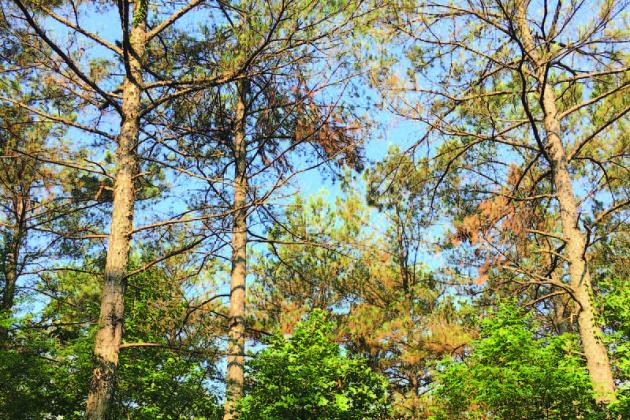MONTICELLO - For months, foresters and researchers have been investigating reports of ailing pine trees in Arkansas. New diagnostic lab results help tell part of the story, but researchers are continuing to investigate the cases of loblolly pine decline.
Michael Blazier, director of the Arkansas Forest Resources Center, said that diagnostic results from pine tree samples sent to Auburn University this spring tested positive for the fungal disease brown spot needle blight. Blazier is also dean of the College of Forestry, Agriculture and Natural Resources at the University of Arkansas at Monticello.
While brown spot hasn't typically been a disease of concern for Arkansas' predominant pine tree species, the loblolly pine, Blazier said that several years of higher-than-usual levels of rain created perfect climatic conditions for spreading the disease.
Loblolly pine is the most economically significant tree species in the state's approximately $6 billion forest economy, Blazier said.
"It's been present more along the Gulf Coast in a different species of pine," he said, referring to longleaf pine trees. But parts of Arkansas have gotten 200 to 250 percent of average precipitation during the winterspring period in recent years - perfect conditions for growing fungal inoculum that could spread to loblolly pine trees.
"The prevailing suspicion here is that climatic conditions have been ripe enough for growing enough of it that it would jump over and affect another species," he said. "Once it had a toehold there, it just kind of feeds itself, and it seems to be spreading across the Southeast." Harrell Wilson of Tri-W Logging at Rison manages timberland in Cleveland County and throughout southern Arkansas. While he has yet to run across browning pine needles in the land he manages in Cleveland County, Wilson said he has encountered in adjoining counties.
Wilson said he recently toured a stand of timber located in Drew County south of Monticello. When he and the…

